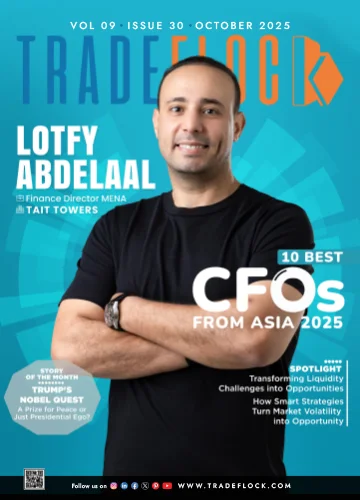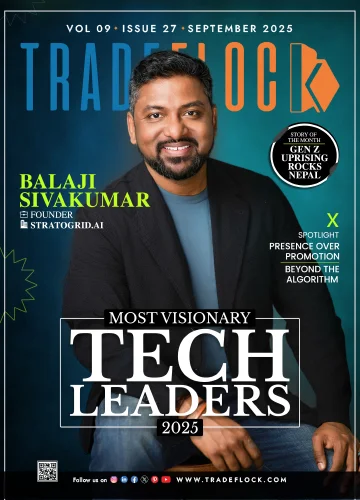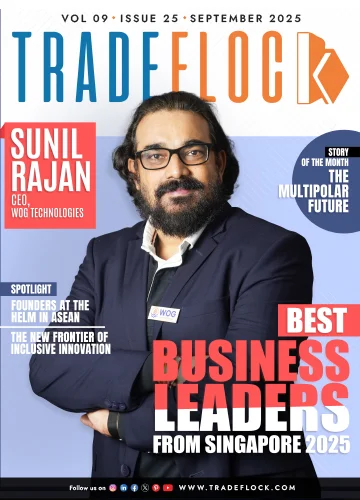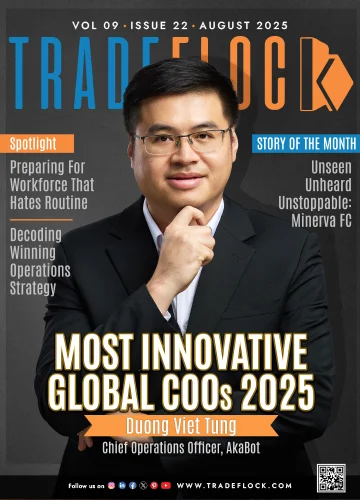
Anam Irfan
Chief People Officer, byteSpark.aiAnam Irfan is a dynamic strategist and storyteller passionate about driving growth through creativity, innovation, and human-centred solutions. With experience spanning brand building, campaigns, and cross-functional collaboration, she thrives on shaping ideas into impactful outcomes.
Walk into any meeting today and the conversation will eventually land on two letters: AI. For some, it’s a futuristic buzzword. For others, it’s already reshaping how they attract, engage, and retain talent. In truth, artificial intelligence has quietly woven itself into every stage of the employee lifecycle, sometimes as an invisible assistant, sometimes as a bold disruptor. The real question is no longer “Is AI ready for HR?” but rather “Are we ready to use it wisely?”
From Sourcing to Success: The Frontline of AI in Recruitment
Recruitment is where AI’s promise becomes most visible. Intelligent algorithms can scan thousands of CVs in seconds, removing biased language and predicting a candidate’s likelihood of success. In pilot programs, gender bias in shortlisting has dropped by 40%, while quality of hire has improved by over 20%. At ByteSpark.ai, we’ve seen mid-sized companies slash their time-to-short list by 50%, reduce interviewer hours by 35%, and boost candidate satisfaction simply by automating the painful bottlenecks. No more CV black holes, just faster, fairer, and more human hiring. And let’s be honest: if AI can take away the late-night CV sifting, I’ll happily trade that time for a coffee chat with my team. After all, Excel sheets never say thank you, but people do!!
Beyond Day One: Smarter Onboarding & Employee Services
The first 90 days often determine whether a new hire stays or strays. AI-powered assistants now automate up to 65% of paperwork, answer FAQs around the clock, and track new-hire sentiment with 71% accuracy, flagging risks early. Imagine joining a company where your forms are prefilled, your chatbot answers policy questions at midnight, and your HRBP has time to take you for coffee instead of chasing signatures. That’s not just efficiency; it’s empathy with Wi-Fi.
Learning Reimagined: From Courses to Curated Journeys
Traditional training often feels like a one-size-fits-none exercise. AI changes that by analyzing an employee’s role, performance, and aspirations to build personalized learning paths. Completion rates rise by nearly 50%, while adaptive learning cuts training time by 30%. For leaders, this means moving from “mandatory modules” to meaningful, continuous learning ecosystems. Platforms like Degreed, LinkedIn Learning, and EdCast aren’t just delivering courses, they’re delivering confidence, at scale. As someone who once sat through a three-hour “Excel Basics” course even though I’d been living in spreadsheets for a decade, I can confirm: one-size learning fits no one. AI finally makes learning feel like Netflix for careers: recommended just for you.
Fairer, Faster, Smarter Performance Management
Few topics are as dreaded as performance reviews. But AI is shifting them from annual stress tests to continuous growth systems. Natural Language Processing (NLP) tools detect biased language in reviews, cutting gender-biased phrasing by 35%. Machine learning models flag struggling employees early, while surfacing high-potential talent before they’re overlooked. Done well, AI in performance is less about surveillance and more about spotlighting strengths, closing equity gaps, and ensuring feedback truly fuels growth.
Rewards, Recognition, and the Equity Equation
Pay transparency is no longer optional, it’s demanded. AI-driven compensation benchmarking now aligns salaries with the market at 92% accuracy, while organizations using AI tools have reduced unexplained pay gaps by 41% in two years. Recognition is where data meets dignity. AI might suggest the “right” gift card, but the magic still happens in the moment you look someone in the eye and say, “You mattered.” Tech can amplify that, but it should never replace it.
Listening at Scale: Engagement & Culture
The “employee voice” is no longer captured in annual surveys alone. AI processes unstructured feedback, from Slack threads to exit interviews, detecting early signs of disengagement or attrition. With 79% accuracy, AI models can predict flight risks up to nine months in advance. Think of it as HR’s sixth sense, without the horror movie vibe. Instead of “I see dead people,” it’s “I see disengaged employees.” The good news? You can act before it’s too late.
Rewards, Recognition, and the Equity Equation
Pay transparency is no longer optional, it’s demanded. AI-driven compensation benchmarking now aligns salaries with the market at 92% accuracy, while organizations using AI tools have reduced unexplained pay gaps by 41% in two years. Recognition is where data meets dignity. AI might suggest the “right” gift card, but the magic still happens in the moment you look someone in the eye and say, “You mattered.” Tech can amplify that, but it should never replace it.
Offboarding, Alumni, and the Long Tail of Talent
Even goodbyes matter. AI tools now analyze exit interviews, distinguishing between what’s said and what’s meant. Alumni engagement platforms keep connections alive, turning former employees into “boomerang hires.” Companies using AIpowered alumni systems report rehiring top performers at 2.5x the normal rate. In a world where talent is scarce, nurturing alumni isn’t sentimental, it’s strategic.
Guardrails: Ethics, Empathy, and HR’s Role
Of course, AI isn’t magic. It amplifies whatever data and processes you feed it. If your HR data is messy, AI won’t fix it, it will simply make the mess faster. That’s why leaders must pair AI adoption with strong ethical guardrails: bias audits, transparency, and a relentless focus on trust. HR’s role, then, is twofold:
- The Translator: turning business problems into AI solutions with clear KPIs and ROI.
- The Conscience: ensuring every AI tool serves both the business and the people. If it doesn’t check both boxes, it doesn’t go live. My rule of thumb? If the chatbot ever approves a salary increase for the office coffee machine, we’ve gone too far.
The Human + Machine Future
Here’s the truth: AI won’t replace HR. But HR leaders who embrace AI will replace those who don’t. The future isn’t HR vs AI, it’s HR with AI. To thrive, HR professionals must become AI-literate, not as coders but as translators,
“IF AI CAN TAKE AWAY THE LATENIGHT CV SIFTING, I’LL HAPPILY TRADE THAT TIME FOR A COFFEE CHAT WITH MY TEAM. AFTER ALL, EXCEL SHEETS NEVER SAY THANK YOU, BUT PEOPLE DO!!”
able to test workflows, question outputs, and connect data to dignity. At ByteSpark.ai, I’ve seen the skepticism melt into excitement the moment leaders witness AI solving real problems. Because when AI takes away the repetitive, what’s left is what we do best: building culture, coaching leaders, and shaping experiences. After all, machines might calculate faster, but only humans can care deeper.














